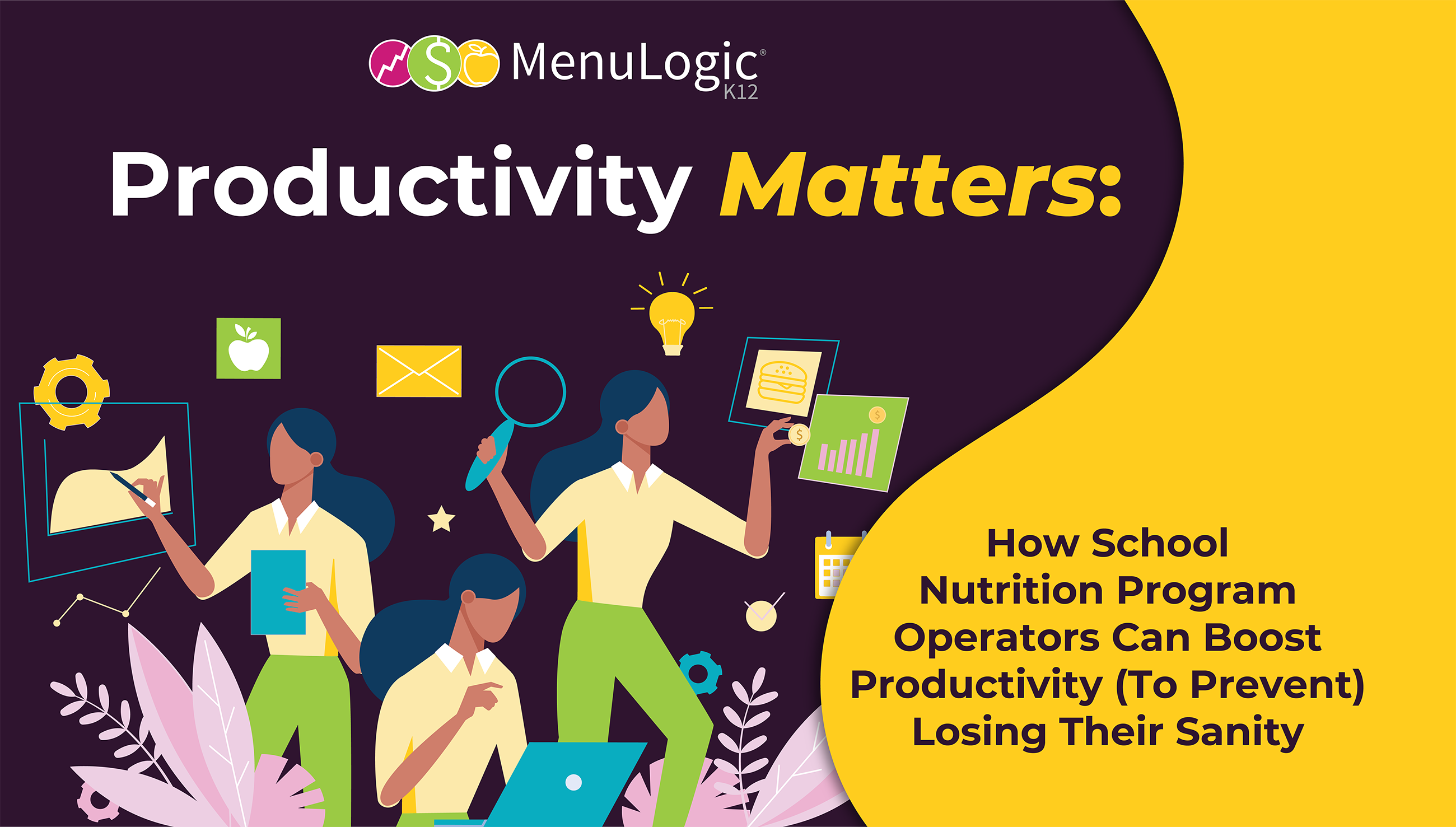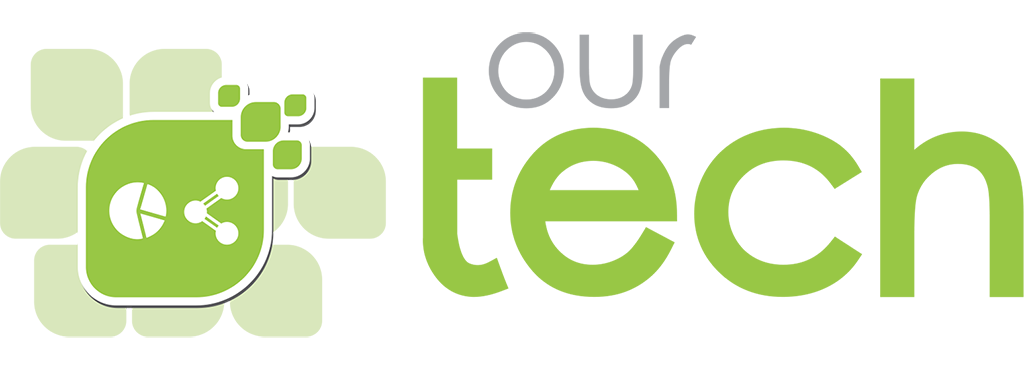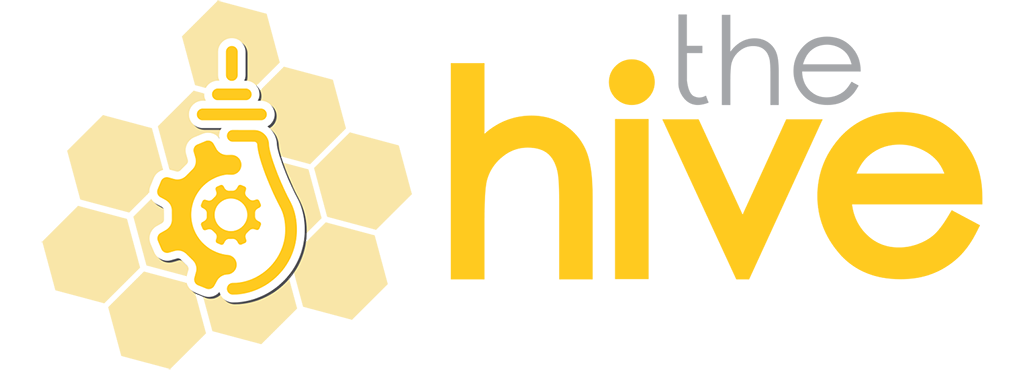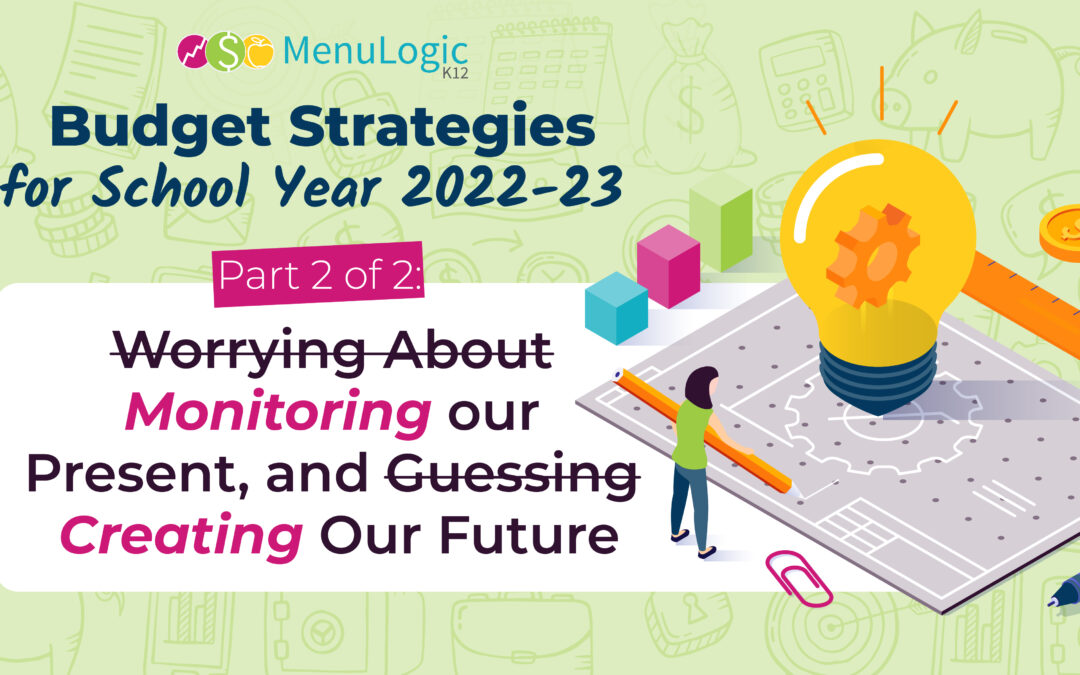Budget Strategies for SY 22-23 (Part Two): Focus on Worrying about Monitoring our Present, and Guessing Creating our Future

In part 2 of our budget strategies blog series, we will look at the steps any school nutrition leader can and should take right now to navigate into SY 22-23 with confidence and peace of mind. It’s going to take a team effort — and that means that leaders will need to open up conversations and decisions about budgets and share ways that each member of the school nutrition team can contribute. This might seem scary, but I believe our teams will respond to transparency and context about the budget situation by rising to the occasion to help leadership solve this puzzle we’re about to head into.

I think that we can all agree that any decision we have to make, whether it’s meal pricing, pay rates, food purchasing decisions, or the others that have a major impact on our budget would be made more efficiently and effectively with objective, fact-based knowledge. Combine that knowledge with the subjective, observation-based knowledge of our teams and we have a strong foundation to build upon.
But building this strong foundation isn’t everything — you have to actually do something with this knowledge. Or what if you aren’t using MenuLogic K12 and you don’t have all of this accessible to you right now? Then what? That’s OK! You might not be able to apply steps 1 and 2 this summer, but you certainly can join in when we get to steps 3 and 4.

Building a budget requires having knowledge about the main parts of your budget:

The next step is combining all of these to see the outcome. It’s important to consider the following questions:
- What is your profit/loss?
- Is that profit/loss acceptable?
Now, what about the major changes are we expecting? Increased food and supply costs, increased labor costs, the possibility of decreased meals sold due to universally free waiver ending, changes in pricing and reimbursement (to name a few!).
To understand the impact those changes may have on the budget, we have to have a way to pull it all together.
At MenuLogic K12, we’re ALWAYS dedicated to providing the resources our customers (school nutrition trailblazers) need to succeed, no matter what challenges they face. We recently released our “Budget & Cost Projections Tool” that allows the user to use the information they have and combine that with various projected changes, in order to see the outcome in a “big picture” view. If the outcome isn’t what they desired, they can adjust decisions (e.g. meal prices, food cost targets, meal projections) to see what is necessary for them to meet their desired outcome.

This tool combines what you KNOW from MenuLogic K12, with what might happen with various cost and revenue increases or decreases, to see what the outcome will be. But at its core, it combines answers to the same questions we all have:


What can we control RIGHT NOW? We have some level of influence and control on both pricing and cost. Using information from historical data will help us decide how to make the best use of that control. So, maybe you’re thinking — “I don’t have this information. Has the ship sailed for me this school year? Should I just hope for the best here?” No way!
We can use whatever knowledge we have – from whatever source it came from to set targets, limits, and goals on the parts of this situation that we CAN control.
Wondering just what we can control? Here’s a breakdown:
- We can control our own time and the way we use it to be the best we can be for our programs — our students deserve nothing less;
- We can control how we use our budget to get us the tools and services we need to move our programs forward;
- We can ensure our pricing is adequate;
- We can communicate with our parents and students and put efforts into marketing our programs in the absolute best light;
- We can control our future menus by design: by setting (realistic) cost per meal targets and limits;
Realistic = considers weighted analysis of what students will actually choose and decline (based on what they have actually chosen and declined in the past) waste costs, customization, condiments, supplies, labor, and overhead.
- We can put a system and process in place right now to monitor our menus in real-time and make adjustments to ensure that we hit our targets and limits as designed.

Maybe you’re thinking, “Oh great, another process for me to do?” Don’t be. You’re already doing a lot more than you would have to if you take the MenuLogic K12 approach.
What is that approach exactly?
Planning isn’t everything. And, it doesn’t really mean that much if you’re using fake guesses at projections. But, I understand why traditionally so much time is spent planning. It’s because that’s all we’ve ever had the tools to do and we had to try something.
But we have other technology now that allows us to take a different (easier, better, less time-consuming and more effective) approach. Let me challenge you to consider this:
You can only plan so much before you just need to do something — take some kind of action. Do what you want to do (by building the menus of your school nutrition teams’ dreams). Just ensure you have a quick and easy way to check that what you’re doing is working (i.e. participation is high, budget it met, and operational efficiencies abound). If it isn’t working, you would have the knowledge right there — in seconds — about what to adjust to ensure that what you want to do will work out.
But this can’t be a one-person show. The whole school nutrition team’s work contributes to the budget. In a time where raises, benefits, staffing levels and menu format changes are being discussed regularly — now is the time to level with our staff and bring them all into the conversation and into this process.
Wouldn’t it be a lot easier to set a target weighted meal cost and let your Menu Planner make decisions independently as long as they meet that and any other targets and expectations? What about explaining why a menu day had to be adjusted if the Menu Planner and Manager saw that it wasn’t meeting your program’s participation or profitability targets? If we have those targets in place and the whole team can see both the target and the results — there isn’t any work and there aren’t any conversations that need to be had if something needs to be adjusted. All time spent can be focused on the solution to the problem everyone already agrees that you have. No time is wasted on identifying the problem through manual data analysis or uncomfortably discussing whether the problem actually exists.
So, if you want to transform the way you do business and try a new approach — I’m inviting you to join us. Join our group of highly motivated school nutrition trailblazers who are figuring out — together — just what we can do with the confidence that knowledge can give us and our entire school nutrition teams!


















